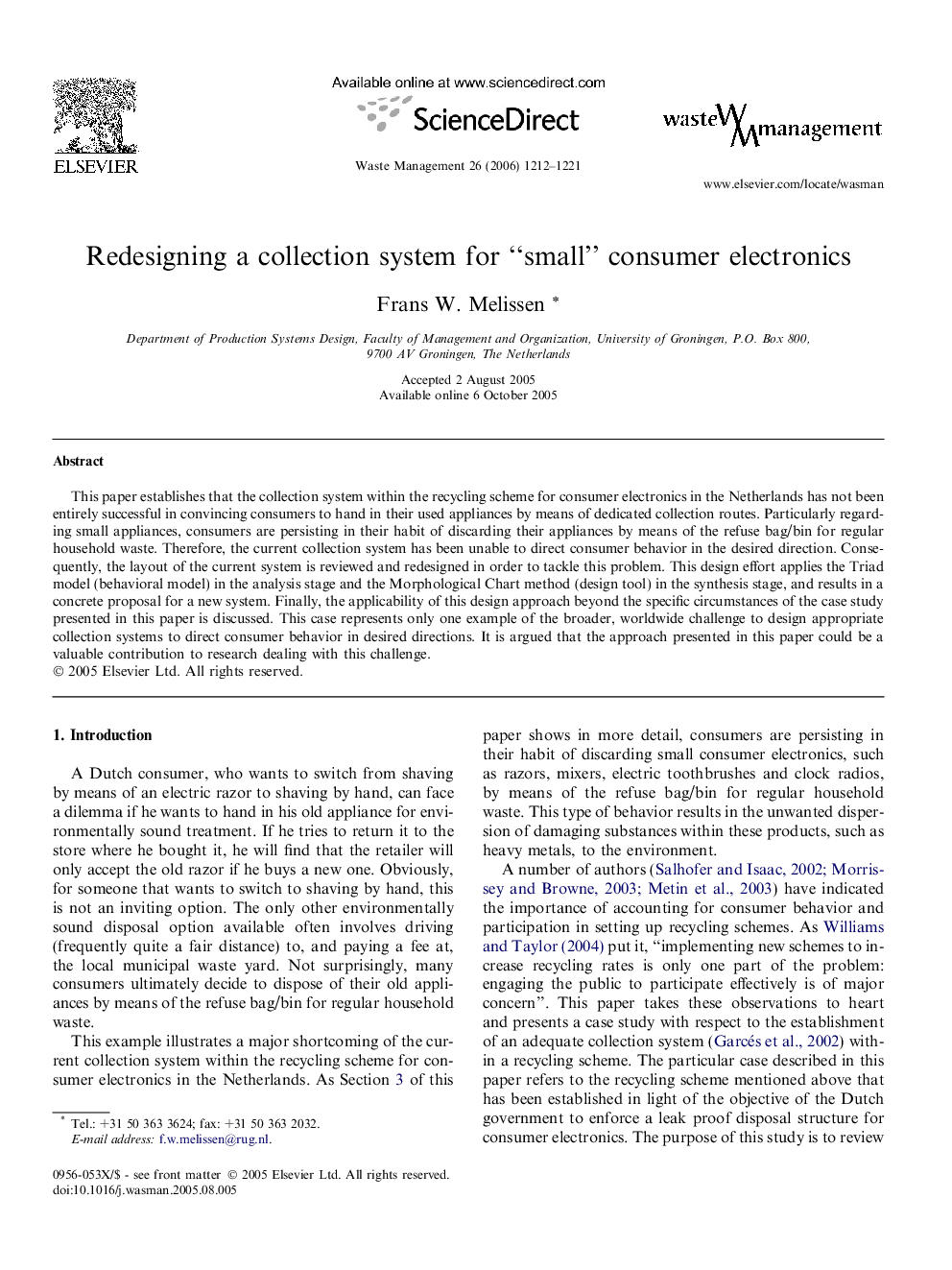| Article ID | Journal | Published Year | Pages | File Type |
|---|---|---|---|---|
| 4474203 | Waste Management | 2006 | 10 Pages |
This paper establishes that the collection system within the recycling scheme for consumer electronics in the Netherlands has not been entirely successful in convincing consumers to hand in their used appliances by means of dedicated collection routes. Particularly regarding small appliances, consumers are persisting in their habit of discarding their appliances by means of the refuse bag/bin for regular household waste. Therefore, the current collection system has been unable to direct consumer behavior in the desired direction. Consequently, the layout of the current system is reviewed and redesigned in order to tackle this problem. This design effort applies the Triad model (behavioral model) in the analysis stage and the Morphological Chart method (design tool) in the synthesis stage, and results in a concrete proposal for a new system. Finally, the applicability of this design approach beyond the specific circumstances of the case study presented in this paper is discussed. This case represents only one example of the broader, worldwide challenge to design appropriate collection systems to direct consumer behavior in desired directions. It is argued that the approach presented in this paper could be a valuable contribution to research dealing with this challenge.
